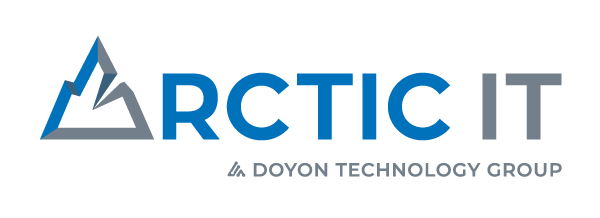My boss likes to remind our customers and prospects that the Cloud we all spend so much time talking about really isn’t in the Cloud, it exists on the ground. Even though we call it the Cloud, as if technology or infrastructure lives up in the air somewhere, it is still made up of racks and racks of hardware, redundant power supplies and broadband pipe which must be housed, maintained and managed by somebody. We talk about the Cloud like it’s one thing but it’s really a shorthand label for a wide variety of online service delivery options and capabilities. While this is hardly earth-shattering news, it’s important for government decisions makers to understand what they are getting and, more importantly, not getting when they consider moving to the Cloud.
There are only a handful of organizations capable of providing cloud services at anywhere near the scale of a Microsoft or Amazon Web Services, but there are many smaller firms providing “boutique” level cloud services for public and private entities. I was reminded of this during a recent data center tour at one of our sister companies. They specialize in a very high-touch brand of Managed Network Services where they essentially take over a client’s entire infrastructure and move it into their own datacenter where they can provide standardized hardware and highly redundant and secure failover, power, broadband and disaster recovery and back-up support. Because of their know-how and experience they can guarantee reliability, security and performance that far exceeds what their clients could do on their own. They also tailor network delivery services to individual client preferences and even, on occasion, provide co-location services. They take their clients completely out of the information technology business and let them focus on their core business.
At Arctic Information Technology, we build our Federal Platform business applications to fully leverage the economies of scale and performance advantages of Microsoft’s FedRAMP certified Government Community Cloud, commonly referred to as the GCC. Because of its enormous physical scale and level of automation, we never physically touch the hardware on which we run our solutions, nor do we have to worry about applying software patches, monitoring server utilization or the eventual fail-over when an individual piece of hardware dies.
We find the GCC incredibly useful for development and data migration efforts since we can spin up and shut down environments in seconds that will scale and perform securely and at the highest levels for as long as we need them and then disappear, along with any associated costs, when we don’t. We also can use the GCC’s huge resources to provide ongoing data synchronization and analysis services, securely and at scale, to create data warehouses that feed tools like Power Bi to provide data visualizations and insights.
All this is handled by highly trained data center personnel who are all US citizens, undergo extensive background checks and are unable to access our client’s encrypted data even while they monitor the performance of the servers that house that data. It’s about as far removed from the kind of personalized Cloud our sister firm offers as can be – but there is a market for both.
Given the large number of ways a government agency can choose to use the Cloud, it is in the government’s best interest to take advantage of the services of a technical advisor with experience in selecting Infrastructure as a Service (IaaS), Platform as a Service (PaaS) and/or Software as a Service (SaaS) strategies and solutions. It’s highly likely that a large agency will want to incorporate all types of Cloud services into its plans to empty the data center and modernize their information technology platform.
An experienced firm, like Arctic IT, has the experience and expertise to assist your agency in honestly evaluating its options and readiness to adopt the Cloud on your own terms. We can share what has worked for us and our clients and clearly explain the limitations you accept as a customer of a SaaS solution – somewhat less control over upgrade cycles, the need for more patience in not building functionality that will soon be included in the core product, the need for IT to let go of some of the chores they are accustomed to performing and the need to become familiar with the monitoring tools and methods that are provided by the SaaS provider so they can proactively manage their subscriptions.
Microsoft’s Government Community Cloud houses a constantly evolving, purpose-built set of capabilities and applications that, while they can be a bit confusing at first, offer government agencies the most secure and regulatory standard compliant cloud available. The challenge for many agencies is balancing their own internal security and compliance practices with the degree of trust and partnership necessary to let go of some of those levers and let their partner and cloud provider handle the ongoing security, compliance, hardware and software patching chores and processes. To truly realize the benefits of the cloud is to embrace the concept of Infrastructure-, Platform- and Software-as-a-Service.
By Chris Kahl, Senior Solution Architect at Arctic Information Technology.

